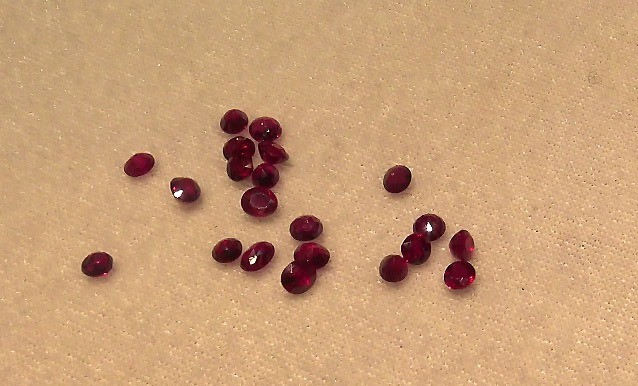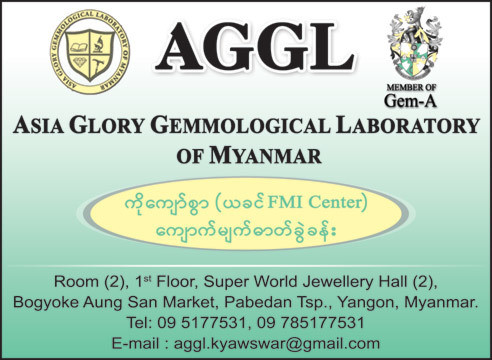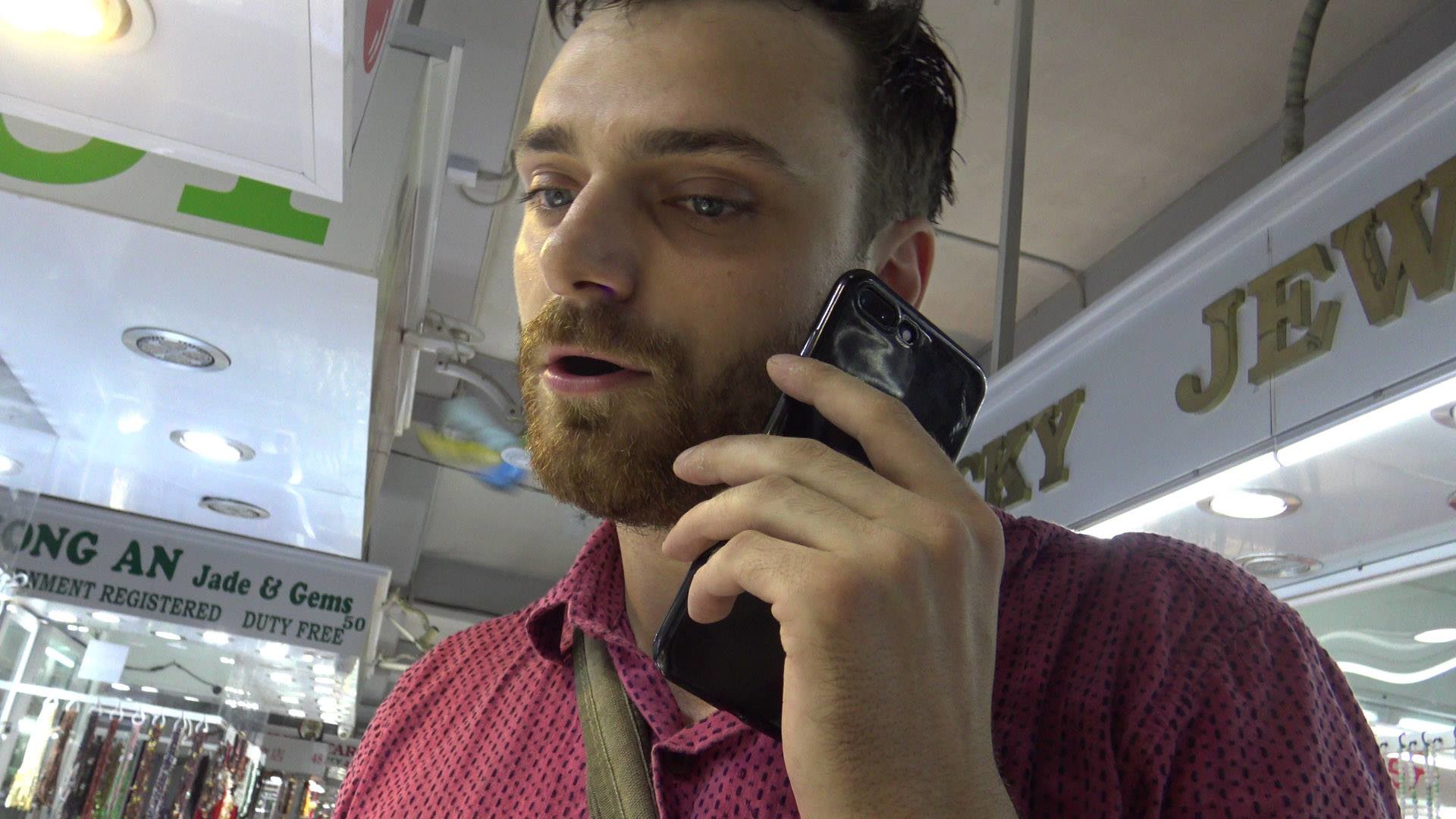YANGON, MYANMAR—Excited by the prospect of a sale, a middle aged female Burmese ruby dealer excitedly opens the folds of a palm-sized yellow parcel paper.
Thirty carats of the glittery, blood-red rubies are poured on to a black velvet tray, glowing under the flourescent lights of a licensed gem shop in Myanmar’s largest city. Advertised as “natural”, the gemstones are said to be mined from Mong Hsu, Shan State, Myanmar.
But in reality, the stones are of inferior quality and actually originate from a completely different continent and thus worth much less money.
Mong Hsu is one of three localities in Myanmar well known for producing spectacular red rubies which are often heated to enhance colour, clarity and value. However, contrary to popular belief, unheated so-called “pigeon blood’ rubies from this region do indeed exist. And during one afternoon in late July, the dealer—owner of Pyit Tine Thaung Gems in Bogyoke Aung San Market—was quick to claim her parcel as authentic. The real McCoy, the cream of the crop. The best rubies the country has on offer--or so she says.

“Deeha dtibawa," she proudly claims in Burmese language: These are natural.
“Ba law jai day?” How much do you want to pay?
Translated to English, the stones on offer were advertised as unheated, untreated; therefore commanding an extraordinary value in comparison to lower tier stones that are cooked with borax and filled with glass to mask imperfections. These stones, she says, are natural. And they looked natural too, even to the trained eye.
But integrity and honesty in the gem world, even in government-sanctioned gem shops, is perhaps even rarer than the most beautiful precious stones on Earth. For every so-called ‘pigeon blood’ Burmese ruby is a legion of fakers, con-men, and victims of fraud who have been duped into buying gems on false pretences, only to dump the scam on to another unsuspecting or wilfully blind wholesaler, retailer, or end customer. Most assured, few people are aware of the intricate nuances of a highly under-regulated billion-dollar global industry.
Perhaps the most dangerous charlatans involved in the undisclosed and therefore deceitful sale of tampered rubies are complicit gemologists who would prefer to overlook whether a stone has been heated or not. This is mostly done out of expediency, as heated rubies aren’t worth nearly as much as an unheated ruby but they can sometimes pass as being the real deal. (cost-per-carat can be up to a million dollars or more if nearly flawless.)
The issue of natural-versus-heated rubies of Myanmar origin is sadly a subject of interpretation within the country, and indeed the whole world over, as most gemologists are too inexperienced with Burmese rubies to detect subtle heat signatures. Nevertheless, Burmese rubies are bought and sold for tens, hundreds, and millions of dollars every year in jewellery shops around the world.
Depending on the personal ethics and honesty of Myanmar gemologists, a stone landing in between the category of “heated” versus “unheated” can be certified as natural, even though it's been cooked to enhance clarity and colour.
After months perusing licensed ruby merchants and their questionable wares in Yangon, Naypidaw, Mandalay and Monywa Myanmar, parcels of African heated rubies are in fact being sold to customers and then authenticated as natural and from Burma by at least one complicit and popular gemological lab in Yangon, the Asia Glory Gemological Laboratory, (AGGL).

AGGL is a popular choice among many Yangon and Mogok based dealers, and for good reason. Not only are the staff familiar with stones from Myanmar’s famous gem tracts: Mogok, Hpakant, Namya, and Mong Shu; staff gemologists also know when it’s time to turn a blind eye so deceitful deals continue unabated.
This was evidenced by a recent visit to AGGL, a lab neatly tucked on to the second floor of the world-famous Bogyoke Aung San gem market in downtown Yangon. A parcel of 31 small rubies weighing 10.11 carats were submitted for testing and nearly all were deemed “natural” and from Mong Hsu despite actually originating in Africa.
“Only two or three rubies are for sure heated. The rest...have been warmed, so they’re natural,” says AGGL gemologist U Kyaw Zwar Htun.
“Where are you taking these stones? Other laboratories (outside Myanmar) all will say natural certification.”
A long silence fills the air of Htun’s laboratory. It’s the sound of discontent.
“Other labs will say it’s natural,” he says. “Are you happy?”

By Htun's logic, the level of heating undergone by the parcel is not detectable in labs in other countries. Therefore the stones can freely pass as unheated, successfully scamming the whole world over.
But not all Myanmar gemologists bend to the whims of local gem sellers so easily. The same parcel of 31 dubious “natural, unheated” Mong Hsu rubies sold by Pyit Tine Thaung Gems was tested in labs elsewhere in the city.
“This is just my opinion, but these stones are not from our country. I think, though I do not have the equipment here to prove it, that these stones are from Africa, possibly Madagascar or Mozambique, but not Myanmar” says Kyaw Wanna, an FGA gemologist who tested the same stones.
"These are not from our country"
Wunna isn't alone. A third laboratory, The Gemological Institute of Myanmar, indicated that all stones showed indications of heating.

“Which lab should we believe?” says a desperate gem broker confronted with three separate opinions from three laboratories. In a last-ditch effort to avoid forking over the money, the broker even went as far to suggest the stones had been swapped.

(Author photographed listening to every possible excuse under the sun as to why the money couldn't be returned. However, the money was returned)
This circumstance of “warmed” rubies encountered in government licensed shops is a mere anecdote underpinning a central issue encountered by dealers of genuine unheated rubies around the world.
In the case of localities such as Mogok, Myanmar, teams of savvy gem burners are known to position themselves close to source locations and use manifold tricks to slowly and gently roast rubies at temperatures low enough to escape detection by most labs and dealers. The game then becomes not one of honesty or integrity, but a race to see who can fool the gemologists and other dealers with the best looking gemstones in order to ride the coattails of value ascribed to a so-called natural ruby.
A sharp and honest gemologist is forced to constantly keep on top of new treatment types so they can properly trace the origin and discover evidence of tampering, often aided with specialized equipment, encyclopaedic knowledge of inclusion types, and microscopes.
Unfortunately, the deceptive sale of “warmed” rubies diminishes the reputation and face of honest Myanmar stone sellers across the country. Perhaps one day the primary perpetrators of these undisclosed practices will be brought to justice or at least revealed for their trickery.